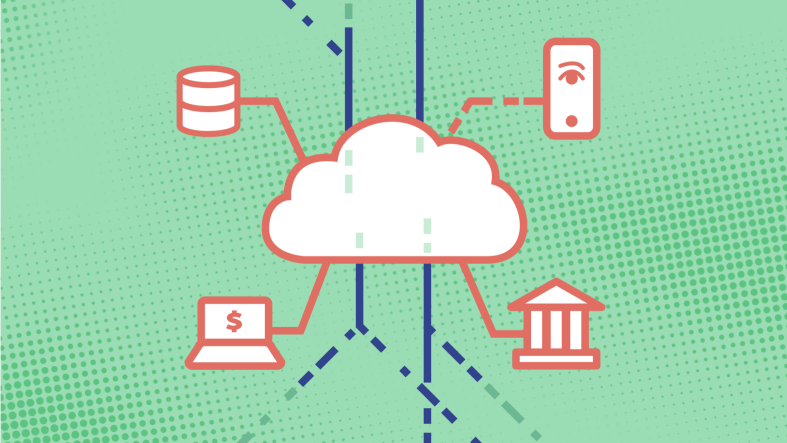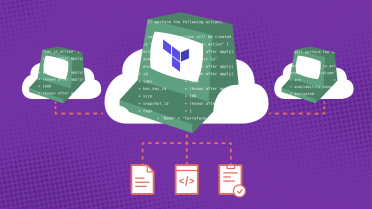It is no secret that the challenge of reducing carbon emissions in the global climate crisis is immense. It is also old news that the conundrum is complex.
There are a multitude of areas and industries that have to improve their ways and decrease the amount of CO2e (Carbon Dioxide Equivalents) they add to the atmosphere. We're all familiar with emissions within the transportation sector, but energy, heating, manufacturing and various aspects of food processing make up substantial pieces of the pie as well. It's a daunting task, that requires a lot of changes in a wide variety of areas on a massive scale. Still, a lot of these industries are already stepping up to find innovative and collaborative ways to remove and reduce greenhouse gases in their supply chain;
Data centres are yet another significant contributor, estimated to account for nearly 2% of carbon emissions, roughly on par with the airline industry. Depending on your sources, some predictions imply that the amount of data is expected to triple in the next two years! Naturally the carbon emissions from data centres are projected to increase as the amount of data and processing in the world continues to rise. However, there are ways to reduce these emissions and help move towards a more sustainable future;
Reducing Carbon Footprint in Data Centres
Data Centre operators are increasingly adopting best practices towards energy efficiency and SEB is no exception. We are actively working to reduce energy consumption in our data centres and use more energy-efficient hardware. We're also improving the lifecycle management of hardware and adhering to software coding and monitoring practices that help decrease unnecessary server utilisation.
For instance: New software solutions for typical IT tasks can be constructed to use less server capacity while less server capacity while achieving the same tasks. One powerful example of this is by containerising workloads in such a way that the most demanding services are the ones that scale up to meet the demand. Compare this to a monolith where the upscaling of one particular component means additional compute capacity for the entire system - that may or may not be utilised. Another interesting reduction is to reuse heat generated from data centres in other facilities. By adopting these methods, we can significantly reduce carbon emissions and improve our sustainability.
As impressive as many of these changes are, it is difficult for companies whose primary business model is not data centres to impact the entire supply chain, from hardware manufacturing to energy mixture.
Cloud Computing for Energy Reduction
To further reduce carbon emissions, businesses may also turn to cloud computing, which provides energy savings at a massive scale. The benefits of transitioning to the cloud include improved energy efficiency, lower energy consumption, and decreased carbon emissions from data centres. Insights also show that moving to the cloud can reduce energy usage by up to 98%. As another Hyperscaler example SEB is operating on Google Cloud which is paving the way for major CSPs (Cloud Service Providers) on the sustainability journey as they aim to be the first major company in the world to run on carbon-free energy by 2030.
Aside from supply chain and other “economy of scale”-impacts, the transparency and accessibility of cloud computing may also improve software sustainability at an individual level. Google Cloud Platform makes Carbon Footprint data that your organisation has in the cloud available as an integrated product in the platform. At SEB we use this data to inform and visualise the current sustainability impact that our environments have to our developers, and we're looking forward to improving the way that sustainability helps drive our software even further in the future.
A key aspect of this phenomenon is that the transparency of, and immediate feedback on, how your software solutions may affect the sum of the company's emissions, makes it attractive, easy and also rewarding to change your behaviour and software at an individual level. As a trivial example, changing which region your workload runs in can have a substantial impact on your emissions. This creates incentives for developers to consider more cloud-native architectures and application models which leverage the scale and flexibility of cloud. Both in terms of meeting peak demand, but also when scaling down to zero once additional compute power is superfluous.
To further reduce carbon emissions, businesses may also turn to cloud computing, which provides energy savings at a massive scale. The benefits of transitioning to the cloud include improved energy efficiency, lower energy consumption, and decreased carbon emissions from data centres. Insights also show that moving to the cloud can reduce energy usage by up to 98%. As another Hyperscaler example SEB is operating on Google Cloud which is paving the way for major CSPs (Cloud Service Providers) on the sustainability journey as they aim to be the first major company in the world to run on carbon-free energy by 2030.
Aside from supply chain and other “economy of scale”-impacts, the transparency and accessibility of cloud computing may also improve software sustainability at an individual level. Google Cloud Platform makes the Carbon Footprint data that your organisation has in the cloud available as an integrated product in the platform. At SEB we use this data to inform and visualise the current sustainability impact that our environments have to our developers, and we're looking forward to improving the way that sustainability helps drive our software even further in the future.
A key aspect of this phenomenon is that the transparency of, and immediate feedback on, how your software solutions may affect the sum of the company's emissions, makes it attractive, easy and also rewarding to change your behaviour and software at an individual level. As a trivial example, changing which region your workload runs in can have a substantial impact on your emissions. This creates incentives for developers to consider more cloud-native architectures and application models which leverage the scale and flexibility of cloud. Both in terms of meeting peak demand, but also when scaling down to zero once additional compute power is superfluous.
The Future of Sustainable Computing
Reducing carbon emissions is one of the most significant challenges we currently face as a society. As Data Centres computations and utilisations are predicted to increase alongside the impressive growth of data in the world, we need to adopt proactive measures in improving sustainability practices. It is crucial to keep working on the footprint of our on-prem data centres and the transition to cloud provides ways to reduce our carbon footprint both on a corporate and individual level. This will help us do everything we can to improve the sustainability outlook of the future. And the possibilities we currently see to innovate and collaborate to create small changes that on a large scale can have a big impact, well, at least it makes me optimistic about what's to come!




